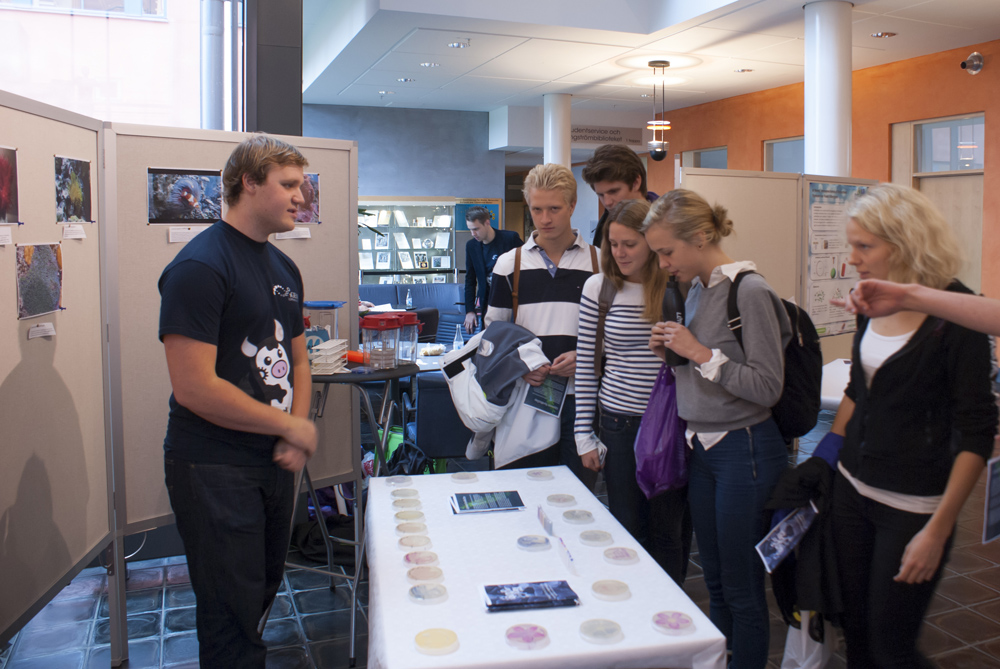Team:Uppsala/bioart
From 2013.igem.org
(Difference between revisions)
| (7 intermediate revisions not shown) | |||
| Line 83: | Line 83: | ||
<li><a href="https://2013.igem.org/Team:Uppsala/metabolic-engineering">Metabolic engineering</a> | <li><a href="https://2013.igem.org/Team:Uppsala/metabolic-engineering">Metabolic engineering</a> | ||
<ul> | <ul> | ||
| - | <li><a href="https://2013.igem.org/Team:Uppsala/p-coumaric-acid"> | + | <li><a href="https://2013.igem.org/Team:Uppsala/p-coumaric-acid">p-Coumaric acid</a></li> |
<li><a href="https://2013.igem.org/Team:Uppsala/resveratrol">Resveratrol</a></li> | <li><a href="https://2013.igem.org/Team:Uppsala/resveratrol">Resveratrol</a></li> | ||
<li><a href="https://2013.igem.org/Team:Uppsala/lycopene">Lycopene</a></li> | <li><a href="https://2013.igem.org/Team:Uppsala/lycopene">Lycopene</a></li> | ||
| Line 104: | Line 104: | ||
<li><a href="https://2013.igem.org/Team:Uppsala/modeling" id="list_type1"><img class="nav-text" src="https://static.igem.org/mediawiki/2013/6/63/Uppsala2013_Modeling.png"></a> | <li><a href="https://2013.igem.org/Team:Uppsala/modeling" id="list_type1"><img class="nav-text" src="https://static.igem.org/mediawiki/2013/6/63/Uppsala2013_Modeling.png"></a> | ||
<ul> | <ul> | ||
| - | <li><a href="https://2013.igem.org/Team:Uppsala/P-Coumaric-acid-pathway"> | + | <li><a href="https://2013.igem.org/Team:Uppsala/P-Coumaric-acid-pathway">Kinetic model</a></li> |
<li><a href="https://2013.igem.org/Team:Uppsala/modeling-tutorial">Modeling tutorial </a></li> | <li><a href="https://2013.igem.org/Team:Uppsala/modeling-tutorial">Modeling tutorial </a></li> | ||
| + | |||
| + | <li><a href="https://2013.igem.org/Team:Uppsala/toxicity-model">Toxicity model</a></li> | ||
</ul></li> | </ul></li> | ||
<li><a href="https://2013.igem.org/Team:Uppsala/parts" id="list_type2"><img class="nav-text" src="https://static.igem.org/mediawiki/2013/e/eb/Uppsala2013_parts.png"></a></li> | <li><a href="https://2013.igem.org/Team:Uppsala/parts" id="list_type2"><img class="nav-text" src="https://static.igem.org/mediawiki/2013/e/eb/Uppsala2013_parts.png"></a></li> | ||
| Line 124: | Line 126: | ||
<li><a href="https://2013.igem.org/Team:Uppsala/public-opinion">Public opinion </a></li> | <li><a href="https://2013.igem.org/Team:Uppsala/public-opinion">Public opinion </a></li> | ||
<li><a href="https://2013.igem.org/Team:Uppsala/Outreach">High school & media </a></li> | <li><a href="https://2013.igem.org/Team:Uppsala/Outreach">High school & media </a></li> | ||
| - | + | <li><a href="https://2013.igem.org/Team:Uppsala/bioart">BioArt</a></li> | |
| + | <li><a href="https://2013.igem.org/Team:Uppsala/LactonutritiousWorld">A LactoWorld</a></li> | ||
| + | <li><a href="https://2013.igem.org/Team:Uppsala/killswitches">Killswitches</a></li> | ||
| + | <li><a href="https://2013.igem.org/Team:Uppsala/realization">Patent</a></li> | ||
</ul></li> | </ul></li> | ||
<li><a href="https://2013.igem.org/Team:Uppsala/attribution" id="list_type4"><img class="nav-text" src="https://static.igem.org/mediawiki/2013/5/5d/Uppsala2013_Attributions.png"></a></li> | <li><a href="https://2013.igem.org/Team:Uppsala/attribution" id="list_type4"><img class="nav-text" src="https://static.igem.org/mediawiki/2013/5/5d/Uppsala2013_Attributions.png"></a></li> | ||
| Line 139: | Line 144: | ||
<div id="main_content"> | <div id="main_content"> | ||
| - | <h1 class=" | + | <h1 class="main-title">BioArt </h1> |
<div class="main_text_box"> | <div class="main_text_box"> | ||
| - | To | + | To explain what happens when a bacteria is genetically modified to the public is often challenging. It is often very abstract and the changes are invisible to the layman. To overcome this challenge we created bioart. Bioart is an easy and fun way to illustrate the result of modifying our bacteria. By using parts from our own <a href="https://2013.igem.org/Team:Uppsala/chromoproteins#l1">chromoprotein collection</a> we made sure that the result is visible to the naked eye and no UV-light is needed. We used them for creating a bioart exhibition at our <a href="https://2013.igem.org/Team:Uppsala/synbioday#refpoint1">SynBioday</a>. It was very effective at getting peoples attention. People were very curious of how we made the coloured bacteria. This gave us a natural way to introduce them to some basic synthetic biology. |
| - | + | ||
| - | + | ||
</div> | </div> | ||
<div id="box_of_art_pic"> | <div id="box_of_art_pic"> | ||
Latest revision as of 22:52, 28 October 2013
BioArt
To explain what happens when a bacteria is genetically modified to the public is often challenging. It is often very abstract and the changes are invisible to the layman. To overcome this challenge we created bioart. Bioart is an easy and fun way to illustrate the result of modifying our bacteria. By using parts from our own chromoprotein collection we made sure that the result is visible to the naked eye and no UV-light is needed. We used them for creating a bioart exhibition at our SynBioday. It was very effective at getting peoples attention. People were very curious of how we made the coloured bacteria. This gave us a natural way to introduce them to some basic synthetic biology.
 |  |  |
 |  |  |
 |  |  |
 "
"










